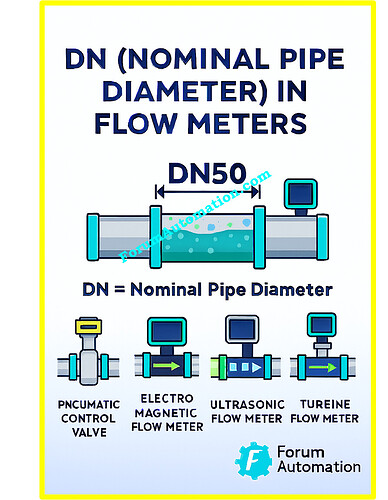What is DN in a flowmeter?
What is DN in a flowmeter?
In flow measurement, “DN” stands for “Diameter Nominalis,” which is the pipe’s nominal diameter where the flow meter is mounted. It doesn’t show the precise internal diameter, but it is a normal way to choose and match flow meters to pipe sizes. A DN50 flow meter is made to work with a pipe that has a nominal diameter of 50 mm. Choosing the right DN is very important for getting accurate and dependable flow measurements in industrial systems.
A DN flow meter tells you how much gas or liquid is moving through a pipe, usually in liters per second (L/s) or cubic meters per hour (m³/h). Depending on the needs of the operation, DN sizes can be very small (DN6) or very high (DN2000+). Choosing the right DN keeps the flow as smooth as possible, cuts down on measurement errors, and keeps the pipe system in good shape.
DN flow meters are very accurate, can be used with a wide range of liquids and gases, and can handle a wide range of temperatures and pressures. They assist sectors including chemical production, water management, oil and gas, and HVAC systems cut down on waste and work more efficiently.
Some common types of DN flow meters are:
Electromagnetic: Works best with liquids that carry electricity, and is often utilized in water and wastewater systems.
Ultrasonic: Works with both gases and liquids and is good for big DN pipes.
Turbine: Works well with oils and fuels that don’t have a lot of viscosity.
To sum up, DN in a flow meter is an important parameter that makes sure the instrument works with the pipe system, gives accurate readings, and allows for dependable process management in industrial settings. Choosing the right DN is important for safety, efficiency, and following the rules
